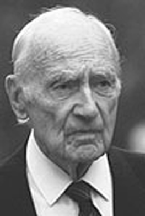Co-editors: Seán Mac Mathúna • John Heathcote
Consulting editor: Themistocles Hoetis
Field Correspondent: Allen Hougland
|
Papon "ordered secret Paris massacre of 1961" by Charles Masters of The Sunday Times Bullets in the water by Hosni Abdel Rehim of the Al-Ahram Weekly Photos: The Camp at Drancy, France France shielded Vichy bureaucrats after war
|
In 1998, the Algerian newspaper Liberté was seized by police to prevent distribution of this article in France. According to Reporters Sans Frontières, on 19 October 1998, French police seized the 17 October edition of the Algerian daily Liberté at Lyon airport. No official reason was given for the move. However, Reporters Sans Frontières believed it to be connected with an article by Hakim Sadek entitled "When the Seine was full of bodies". Liberté was publishing this article to mark the 35th anniversary of a demonstration by Algerians in Paris that led to an estimated 200 Algerians being killed by police. Below is the full version of the article as published by Liberté. 
Maurice Papon The repression was ordered by the same person who had organised the deportation of Jews for the Nazis. Was it only because at that time Papon, whose staff were still imbued with the thinking of their former Nazi masters, was in charge of the Paris police? Was it because at that time France was still at war with Algeria and there was no such thing as a good enemy? Or was it rather because apart from any immediate circumstances and reasons, hatred had reached bursting point? The 17th of October 1961 was a date that marked the height of the repercussions of that hatred which had thrown an ever-increasing number of Algerians whose only crime was their nationality into the murky waters of the river that flows quietly through Paris. Because it had become common practice to get rid of the bodies of Algerians - and sometimes Algerians who were still alive - who bore rather too visible signs of police brutality by depositing them in the Seine. It was way of avoiding embarrassing questions. During the summer of 1961 it was quite clear how the war was going to end and some people in France were unwilling to accept that thousands of workers with the dubious privilege of taking on all the dirty jobs, those thousands of men with swarthy features on whom they were used to venting their xenophobic spleen, should be on the point of belonging to a free, sovereign nation. The provocation came in the form of a police order that Moslem "citizens" of Algeria only should be subject to a curfew from 8.30pm to 5.30am, on the pretext that there had been a significant increase in the number of attacks on policemen. Does it need to be pointed out that the number of these attacks, at a time when the first negotiations were signalling an end to the fighting, was tiny compared to the number of victims of "excesses" by the French police? The implications of these restrictions on the Algerian community were such that the leaders of the armed struggle in France organised a response. For quite apart from the fact that it discriminated against Algerians, the curfew opened the way to all kinds of abuse of authority, making such abuses legal, effectively making it a crime to look like a foreigner and forcing unemployment on the countless workers who needed to go to and from their jobs during the curfew. As a result, history made this one of the most tragic episodes in the war of national liberation. And if the events of October 1961 were wrapped in a cloak of silence in France, doubtless because they hardly showed the French authorities in a good light, they were nonetheless the subject of various investigations by impartial observers and even nationalists who were ashamed of the wave of brutality organised by their leaders and carried on with matchless zeal by the "forces of law and order". All the above factors were highlighted with a remarkable concern for truth and objectivity by Jean-Luc Einaud. The author of La bataille de Paris (1) came up with a huge number of eye-witness accounts and documents - many of them previously unpublished - to explain the significance and seriousness of what happened in Paris that 17 October by putting it in its political and social context. Details collected from witnesses who were still alive in the official reports of militants of the FLN French federation in the press at that time tell of the scale of the tragedy, the immeasurable horror of the sight of three bodies being fished out of the Canal Saint-Martin the day after the demonstration, then five, then seven, and finally forty. And there were so many others... The author does not make a single statement that is not backed up by a piece of evidence or an account by a witness. He even includes the route described by François Maspero in Le figuier, the views of well-known French personalities such as Le Pen or Defferre, prosecution or defence witnesses of behaviour which, as the Paris Bar emphasised, "violates the most elementary notions of humanity". © Liberté, 1998 Reference 1 La bataille de Paris (The Battle of Paris). Jean-Luc Einaud, La bataille de Paris, October 1961, Editions Média Plus. |
|
|
|